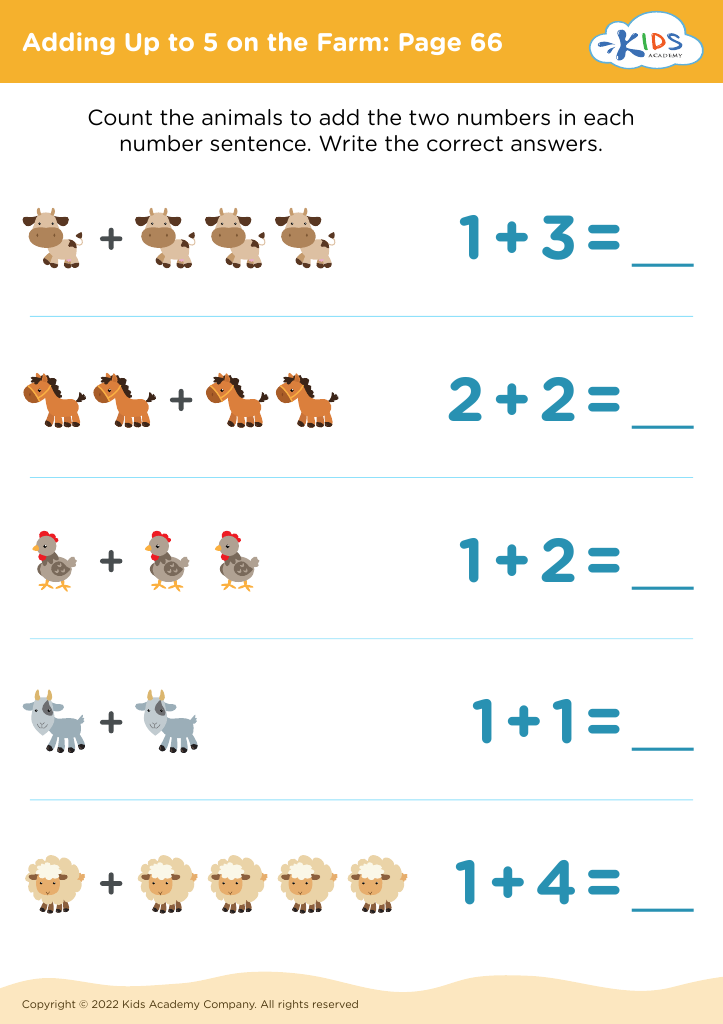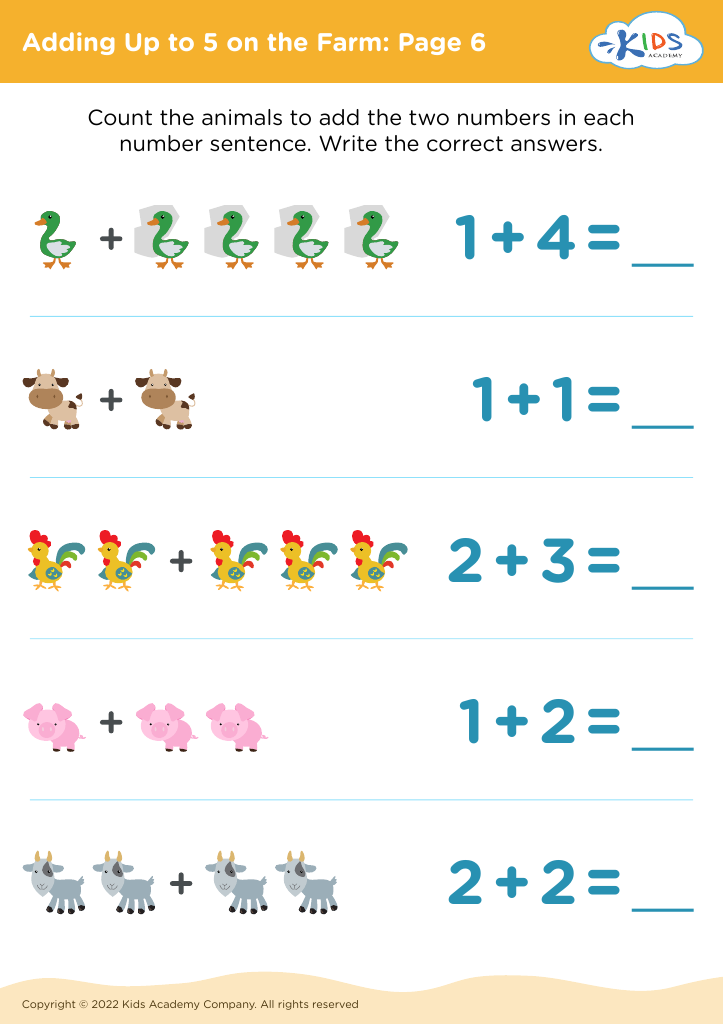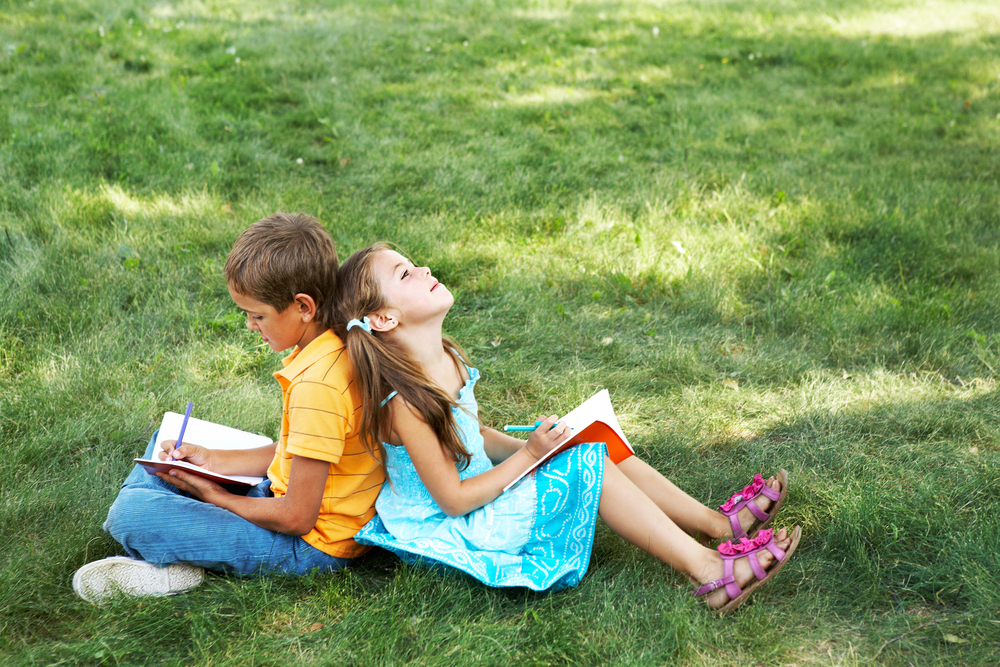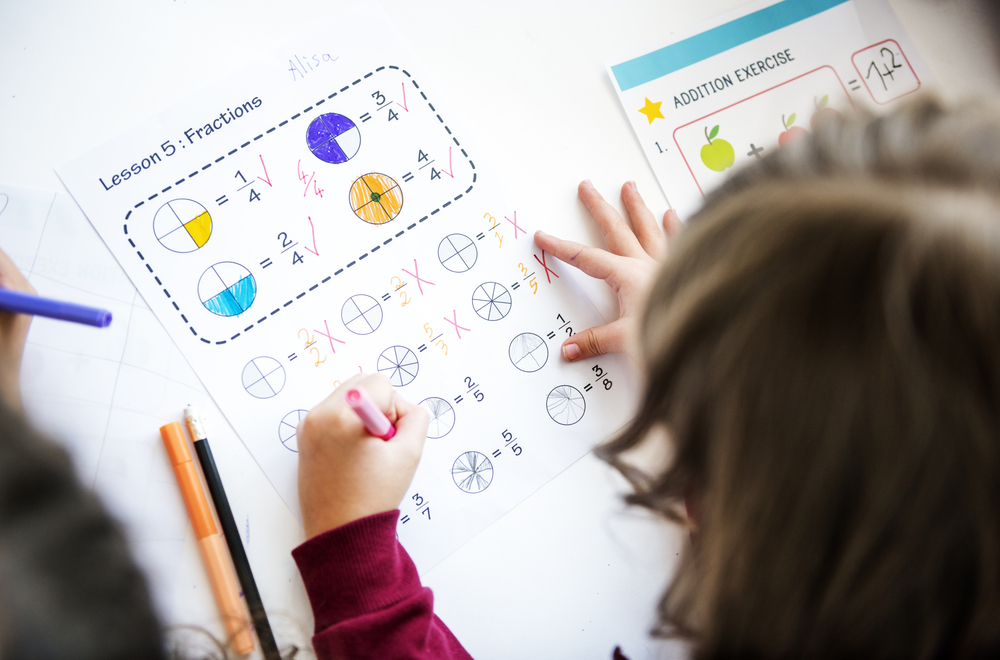Visual Learning Math Worksheets for Ages 3-5
91 filtered results
-
From - To
Introduce your little ones to the exciting world of math with our "Visual Learning Math Worksheets for Ages 3-5"! Specially designed to captivate and engage young minds, these colorful and fun worksheets help children grasp fundamental math concepts through vibrant images and intuitive layouts. Perfect for preschoolers and kindergartners, our visual learning approach supports early development in number recognition, counting, shapes, patterns, and more. Whether for home learning or classroom fun, these worksheets make math an enjoyable adventure, laying a strong foundation for future academic success. Foster a love for learning and watch your child thrive with our expertly crafted resources.


Two And Three Addition Worksheet


Butterfly Addition Worksheet


Subtracting Socks Worksheet
Visual Learning Math is an essential educational approach for children aged 3-5 because it harnesses their natural abilities to understand and retain information through visual means. During these early years, children are more receptive to visual stimuli, which can help demystify abstract mathematical concepts, making them more concrete and engaging.
One primary reason parents and teachers should care about visual learning is that it facilitates comprehension and retention. Visual aids such as colorful charts, images, manipulatives, and interactive tools help children grasp foundational concepts like counting, shapes, and basic arithmetic. These tools transform numbers from abstract symbols into tangible, understandable entities.
Additionally, visual learning fosters critical thinking and problem-solving skills. It encourages children to visualize problems and solutions, aiding in the development of higher-order cognitive skills. Visual representation of math helps children see patterns, make connections, and understand relationships between different mathematical ideas.
Engaging young learners visually also promotes a more inclusive learning environment. Children with different learning styles or those who struggle with traditional text-based instruction benefit significantly from visual aids. By catering to diverse learning needs, visual learning ensures that no child is left behind.
Investing in visual learning math sets a strong mathematical foundation, cultivating a positive attitude towards the subject and empowering children with the skills and confidence they need for future academic success.





 Assign to My Students
Assign to My Students
































